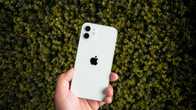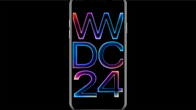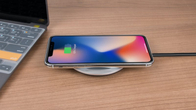
“The iPhone X has done away with the fingerprint sensor and comes with Face ID instead”
One of the biggest tech events of the year unfolded at the Steve Jobs Theatre in Cupertino last night, where tech giant Apple unveiled its latest range of iPhones. CEO Tim Cook set the scene by announcing the iPhone 8 and the iPhone 8 Plus, which come as an iterative upgrades to the brand’s previous smartphone lineup. Cook then announced the futuristic iPhone X and all the leaks came crashing down into one slide. Well, all but one. See, initially, it was rumoured that Apple will position the Touch ID or the fingerprint sensor below the smartphone’s bezel-less display. However, much like last year, Apple has done away with yet another hardware feature and the only way you can unlock your iPhone X is via facial recognition which Apple calls Face ID. But how does Face ID work? Is it secure enough? How accurate is it? Does it work when the lights are off? Well, these are just some of the questions which we will be answering in this article. Stay with us.
Table of Contents
What is Face ID?
Let’s start with the basics – what is Face ID and why was it implemented? Face ID is a form of facial recognition which maps a user’s face and then uses it to unlock the smartphone. As to why it was implemented, Apple believes that a ‘look’ is much more natural than a ‘touch’. A more plausible explanation for the same is that with the top and bottom bezels on the iPhone X gone, there was no place to position the fingerprint sensor. Now that you are up to speed, let’s take a look at how Face ID works.
How does it work?
If you’ve seen the design of the iPhone X, then you might be wondering why there’s a big cut out at the top for the camera sensor. After all, the Essential phone which was launched recently also has a cutout for the front-facing camera, but it is a lot less prominent. Well, the top of the iPhone X isn’t just reserved for the selfie shooter but instead, comes with a TrueDepth camera system which comprises an infrared camera, a flood illuminator and a dot projector. You see, the reason why Apple is betting big on Face ID is because it captures the 3D shape of a person’s face, which is extremely difficult to mimic or spoof when compared to standard image recognition. Here’s how it works. The dot projector will shoot 30,000 invisible dots on your face, which will then be read by the infrared camera. The camera maps the user’s face and feeds it to the smartphone’s A11 Bionic chip’s neural engine.
The neural engine will then check if the mathematical model of the face is similar to the one you’ve stored on your smartphone. All of this happens in real time and since the A11 chip onboard the iPhone X is capable of neural learning, it can detect the changes in your appearance. Therefore, you can unlock your iPhone X even if you are wearing a hat or have glasses on. But what if you want to unlock your smartphone at night, with the lights in your room turned off? Well, that’s where the flood illuminator comes in, which shoots invisible infrared light to recognise your face even if it’s dark.
How secure is it?
Apple stated that the chances of someone hacking into your iPhone by using Touch ID were 1 in 50,000. With Face ID, the company claims that that number has gone up to one in a million. Numbers aside, your facial ID is saved on the Secure Enclave inside the A11 Bionic chip and not on the cloud. That means that all the processing takes place directly on the chip and not on a server, making the system foolproof. Lastly, Face ID won’t unlock your iPhone X on a whim – you’ll actually have to gaze into the smartphone’s sensor to unlock your device. With that said, we can’t say with certainty as to how secure the system actually is until we test it and the Face ID feature proves to work as advertised.










![[Exclusive] iPhone 16 Pro CAD renders show off new button, bigger size, and more Thumbnail](https://www.91-cdn.com/hub/wp-content/uploads/2024/03/iphone-16-pro-cad-renders-feat.jpg?tr=h-110,q-100,pr-true)





